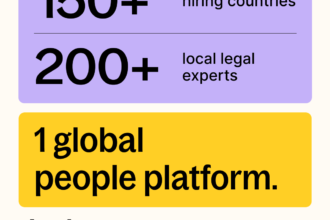Entering new markets can be both a massive opportunity and a complex challenge for any business. Whether you’re a tech startup or an established enterprise, expanding globally requires navigating local regulations, hiring talent, managing operations, and understanding consumer behavior.
One of the most effective—and often underutilized—strategies for global expansion is leveraging channel partnerships. From Employer of Record (EOR) services to strategic alliances and local distribution partners, these channels help businesses reduce risk, speed up market entry, and drive innovation through localized R&D.
In this blog, we’ll explore:
- What channel partnerships are
- The role of EOR in international growth
- How these partnerships support R&D and global expansion
- A step-by-step guide to building an effective partner ecosystem
What Are Channel Partnerships?
Channel partnerships refer to collaborations between a company and third-party entities that help promote, sell, or distribute the company’s products or services. These partnerships can take many forms, including:
- Resellers/Distributors
- Affiliates/Referral Partners
- System Integrators
- Strategic Alliances
- Employer of Record (EOR) Providers
Channel partners already have an established presence in local markets, along with knowledge of legal frameworks, customer behavior, and distribution networks.
EOR: A Key Channel Partner for Global Market Entry
An Employer of Record (EOR) is a third-party entity that hires and manages employees on behalf of a company in a foreign country. It allows companies to hire talent without setting up a legal entity, while staying compliant with local labor laws.
Benefits of Using EOR as a Channel Partnership:
- Quick Market Entry: You can hire local employees in days, not months.
- Regulatory Compliance: EORs handle contracts, payroll, taxes, and labor laws.
- Focus on Core Business: You handle product and service growth; the EOR handles HR complexities.
- Scalable Expansion: Test new markets with small teams before committing further.
This makes EOR a powerful tool in your channel strategy, especially for companies expanding across multiple regions.
How Channel Partnerships Boost R&D and Innovation
Global channel partnerships don’t just drive sales—they can also:
1. Accelerate Localized Product Development
Local partners understand cultural nuances, regional needs, and gaps in your current offerings. Partnering with them helps tailor your product or service to the target market.
2. Provide Access to Skilled Talent
With EORs or staffing firms as channel partners, you can tap into global talent pools for R&D, engineering, and design without setting up local subsidiaries.
3. Drive Co-Innovation
Some partnerships evolve into co-development agreements. Local partners may contribute to product innovation or even create complementary offerings.
Step-by-Step: Using Channel Partnerships for Market Entry & Growth
Step 1: Identify Target Markets
Research which markets offer demand for your solution. Evaluate:
- Market size & growth
- Regulatory environment
- Competitive landscape
Step 2: Define Your Ideal Channel Partner
Consider:
- Industry experience
- Customer reach
- Technical capabilities
- Cultural and language fluency
Step 3: Choose the Right Partnership Type
Based on your market strategy, choose from:
- EOR for talent & compliance
- Distributors/resellers for product sales
- Consulting firms for service-based offerings
- Tech alliances for co-innovation
Step 4: Build a Channel Partner Program
Create a structured program with:
- Onboarding processes
- Revenue-sharing models
- Training and certification
- Sales and marketing enablement
Step 5: Launch, Monitor, and Optimize
- Use KPIs to track performance (leads, conversions, customer satisfaction).
- Adjust support levels and incentives based on partner contribution.
Real-World Example
A SaaS company wants to expand into Southeast Asia but lacks in-country legal entities. They:
- Use an EOR to hire a local marketing and support team.
- Partner with a regional distributor to sell their platform.
- Form a tech alliance with a local cloud services provider for deeper integration.
Result? Rapid expansion with minimal risk, enhanced product fit for local users, and stronger brand visibility.
Final Thoughts
In a world where speed, adaptability, and compliance are crucial, channel partnerships provide the scaffolding businesses need to scale across borders. Whether through an EOR, distributor, or co-development partner, these relationships reduce complexity, open new doors, and drive innovation.
If you’re looking to grow internationally, it’s time to think beyond entity setup and start building your partner ecosystem.
Need Help Expanding Globally?
Whether you’re exploring EOR options or want to build a network of strategic partners, we can guide you through the process.
👉 Contact us today to explore how partnerships can power your global growth.





